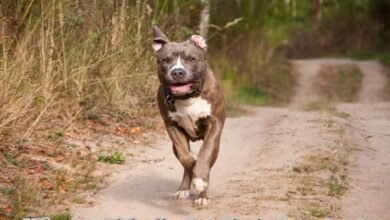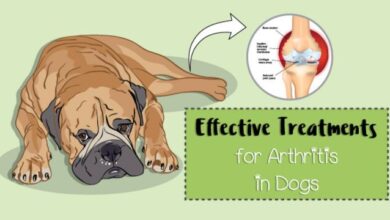
Waghound.com is an Amazon Associate, and we earn from qualifying purchases.
What triggers a dog to bite? Dogs may bite due to fear, stress, or territorial instincts, with unfamiliar situations often acting as a trigger. While not all dogs are aggressive by nature, understanding their triggers can help prevent bites.
Have you ever wondered why even the friendliest of dogs can snap unexpectedly? This behavior can be alarming not only for pet owners but also for those who interact with dogs regularly. This blog post will help you identify what triggers a dog to bite, why these behaviors occur, and how to prevent aggression in your furry friend. By the time you finish reading, you’ll be equipped with valuable insights to keep both dogs and humans safe.
Why Do Dogs Bite? What Triggers a Dog to Bite?
To understand a dog’s behavior, it’s essential to look into the reasons behind their actions. Dogs don’t bite without reason, and recognizing these reasons can help us to address the root cause of the problem.
Fear and Anxiety
What triggers a dog to bite? Fear is one of the most common triggers for a dog to bite. If a dog feels cornered, trapped, or threatened, it might bite as a defense mechanism. For example, if someone reaches toward a dog suddenly, the dog may perceive it as danger.
- Example: A rescue dog with a traumatic past might become frightened by loud noises or unfamiliar faces, triggering a defensive bite. Proper socialization and gradual exposure to new environments can help manage this fear-based behavior.
Territorial Instincts
What triggers a dog to bite? Some dogs are naturally territorial and may bite to protect their space, family, or belongings. This behavior is more pronounced in breeds that were historically bred for guarding.
- Example: A dog may growl or bite if a stranger approaches its home or food bowl. Identifying and respecting these boundaries can reduce the likelihood of aggression.
Pain or Illness
Dogs that are in pain or suffering from a medical condition may react aggressively when touched in sensitive areas. They cannot communicate discomfort verbally, so biting is their way of saying, “This hurts!”
- Solution: Regular veterinary checkups can help identify and treat pain-related aggression before it escalates into bites.
Common Triggers for Dog Bites
What triggers a dog to bite? Now that we understand why dogs bite, let’s explore situations that frequently act as triggers.
Rough Handling
Dogs, especially puppies, can bite during play if they are handled too roughly. Children are often at risk of being bitten due to unintentional pulling or squeezing of ears, tails, or fur.
Startling a Dog
Waking a dog abruptly or approaching it while it’s eating or sleeping may result in a bite. Dogs prefer predictable behavior and dislike being startled out of their routines.
- Prevention Tip: Teach family members proper ways to approach pets. Always give the dog a chance to see and smell you before engaging.
Lack of Socialization
What triggers a dog to bite? Dogs that haven’t been exposed to various people, animals, and environments during their formative months may become fearful and bite in unfamiliar situations.
- Fact: According to the American Veterinary Medical Association (AVMA), properly socialized dogs are less likely to exhibit aggressive tendencies when faced with new experiences.
How to Identify Warning Signs of Aggression
What triggers a dog to bite? Preventing dog bites starts by recognizing the body language that often precedes aggression. Dogs usually exhibit a series of signals before resorting to biting, and paying attention to these signs can mitigate conflicts.
Common Warning Signs
- Growling or snapping
- Raised fur along the back
- Bared teeth
- Ears pinned back
- Tail held stiffly or tucked between legs
If a dog shows any of these signs, it’s best to step back and give the dog some space rather than forcing interaction.
Subtle Clues
Sometimes, the warning signs may not be as apparent. Subtle indications include licking lips, yawning, or avoiding eye contact. These behaviors can suggest discomfort or stress.
Tips to Prevent Dog Bites and Aggression
What triggers a dog to bite? Prevention is always better than reaction, and fostering a safe and harmonious environment can greatly reduce the likelihood of bites. Below are some practical tips to prevent dog aggression.
1. Socialize Your Dog Early
Expose your dog to different environments, people, and animals during its puppy stage. A well-socialized dog is less likely to react fearfully or aggressively to new experiences.
2. Positive Reinforcement Training
Reward your dog for displaying calm and non-aggressive behavior. Positive reinforcement helps train dogs to associate good behavior with rewards, making them less likely to act out.
Example: If your dog remains calm when meeting a stranger, reward them with treats or praise.
3. Understand Dog Body Language
Learning to interpret your dog’s signals and boundaries is vital. By understanding their comfort levels, you can avoid situations that may provoke unwanted behavior.
4. Supervise Interactions with Children
Children and dogs can form loving bonds, but all interactions should be supervised. Teach kids to respect dogs and avoid behaviors like pulling tails or hugging too tightly.
5. Provide a Safe Space
Create a designated area where your dog can retreat when it feels stressed or overwhelmed. This space will serve as a haven, reducing the chance of aggression.
6. Address Behavioral Issues Promptly
If your dog exhibits signs of aggression frequently, seek professional help. A certified dog trainer or animal behaviorist can work with you to determine the cause and develop a tailored action plan.
Building a Strong Connection with Your Dog
What triggers a dog to bite? Dog bites are preventable with the right approach, patience, and understanding. By recognizing triggers, reading body language, and fostering trust, you can create a lasting bond with your canine companion.
Remember, dogs are individuals with unique personalities, and taking the time to understand their needs and emotions will make them happier and less likely to feel threatened enough to bite.
What triggers a dog to bite? Want to know more about becoming the best version of a pet parent? Keep exploring our blog for additional resources on dog training, behavior, and care.
FAQ
What usually triggers a dog to bite?
Dogs bite when they feel scared, threatened, in pain, or are protecting something valuable like food or territory.
Can a friendly dog suddenly become aggressive?
Yes, sudden aggression can be due to fear, pain, illness, or stress. Always check with a vet if behavior changes quickly.
How can I prevent my dog from becoming aggressive?
Socialize early, use positive training, avoid harsh punishment, and ensure your dog feels safe and healthy.
Are certain dog breeds more likely to bite?
Any breed can bite if provoked or poorly trained. Behavior depends more on upbringing, environment, and health.
What should I do if my dog shows signs of aggression?
Stay calm, avoid punishing, and contact a certified dog trainer or behaviorist for help right away.



